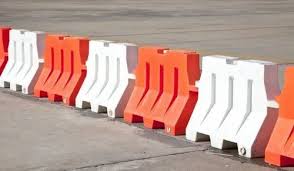How Traffic Barriers Help Prevent Accidents in High-Risk Areas
Road safety continues to be a major concern in high-traffic and accident-prone areas. To reduce risks, physical infrastructure plays an...

Road safety continues to be a major concern in high-traffic and accident-prone areas. To reduce risks, physical infrastructure plays an important role. A traffic barrier is one such solution used widely to prevent collisions and guide vehicles safely, especially in high-risk zones. These barriers are essential for both everyday road safety and emergency situations.
Understanding High-Risk Areas
High-risk areas are road zones that see a higher number of incidents. These include sharp bends, steep slopes, highway intersections, school zones, and construction sites. Drivers often face limited visibility, sudden curves, or unexpected diversions in these places. In such locations, even a small error can lead to major damage or injury. That’s why extra safety measures are necessary.
How Traffic Barriers Improve Road Safety
A traffic barrier helps by physically separating vehicles from dangerous areas. It reduces the chance of cars veering off the road or crossing into oncoming traffic. These barriers also guide drivers through construction zones, lane closures, and accident-prone spots. In case of impact, they are designed to absorb the force, helping reduce injuries and vehicle damage.
Barriers not only protect motorists but also provide safety for pedestrians and road workers. In areas with ongoing repairs or development, barriers form a safe boundary that reduces risk for everyone nearby. Their presence also reminds drivers to remain alert and maintain speed limits in hazardous locations.
Types of Traffic Barriers
There are several types of barriers used across different road conditions:
- Concrete Barriers: These are fixed and used on highways to block vehicles from entering opposing lanes.
- Metal Guardrails: Found on curves and slopes, they flex slightly to reduce crash force.
- Water-Filled Barriers: These lightweight plastic barriers are filled with water on-site and are ideal for short-term needs.
The choice depends on the location, traffic speed, and type of risk present. Each type is designed to provide maximum protection, tailored to the nature of the road and its users.
Placement and Maintenance
Proper placement of barriers is vital. Incorrect installation can do more harm than good. Engineers must assess road conditions, traffic flow, and visibility before setting up any safety barrier. Regular checks and repairs are also important to ensure the barrier continues to function effectively. A damaged barrier cannot provide the same level of protection.
Role of Road Traffic Signs
Alongside barriers, road traffic signs are used to guide and inform drivers. These signs warn about upcoming hazards, speed changes, and barrier placements. Without clear road traffic signs, drivers may not react in time, making the barrier less effective. Combining visual cues with physical barriers ensures safer roads for all users.
Conclusion
Preventing accidents in high-risk areas requires careful planning, the right safety tools, and ongoing attention to road design and driver behaviour. Safety measures must be practical, reliable, and tailored to the environment. By combining physical structures with strategic planning, businesses and authorities can make roads safer for everyone, including motorists, pedestrians, and workers alike. Investing in such solutions reflects a strong commitment to public safety and responsible infrastructure development.


